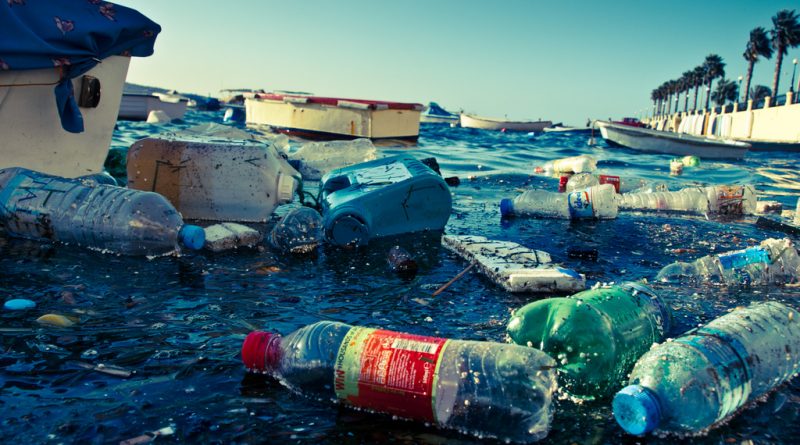The Future of Plastic Pollution in our Oceans
Judy Koren
Staff Writer
On the weekend of June 8, Canada hosted the 44th G7 Summit. The G7 is an informal grouping of the seven most advanced economies around the world. This includes: Canada, France, Germany, Italy, Japan, the United Kingdom, and the United States. The European Union is also present during the conferences, but cannot chair nor host summits.
At the Summit, the group established the G7 Communique: a joint agreement that covers global issues from gender equality to security and climate change. Within this, the group created the G7 Ocean Plastics Charter. According to The Globe and Mail, the Charter calls on all signatories “to reduce the use of plastics and, where alternatives are not available, find ways to include more recycled materials in the plastics they do use.” Reuters outlines the agreement in its entirety, writing that The G7 Ocean Plastics Charter fell under the section of the Communique that is labeled “Working Together on Climate Change, Oceans and Clean Energy” which included the Paris Agreement, pollution, and clean reliable energy sources.
Out of the seven members, only five agreed to sign the Ocean Plastics Charter: Canada, France, Germany, Italy, and the United Kingdom. Notably left out are the United States and Japan. Although the Globe and Mail are unsure why Japan declined, the news outlet reports that it is not surprising that the U.S. removed themselves from the environmental protection section of the Charter since the United States backed out of the Paris Climate Agreement.
Dr. Catherine Tinker is the President and Founder of the Tinker Institute on International Law and Organizations. She is also a graduate and undergraduate professor at Seton Hall University’s School of Diplomacy and International Relations. Dr. Tinker attended NYU Law where she wrote her doctoral dissertation on the Convention on Biological Diversity.
Dr. Tinker finds that voluntary commitments, like the G7 group and declarations, reached through multilateral discussions like the Communique or United Nations declarations adopted by consensus, “provide a strong sense of ownership and responsibility spread among all actors, even without ratification of a treaty.” The G7 Charter assigns responsibility to each country involved, especially with their use and disposal of single-use plastic. Dr. Tinker emphasizes that the “need for global cooperation, not litigation, has never been stronger.”
On World Environment Day prior to the G7 Summit, Secretary-General of the United Nations Antonio Guterres called the plastics crisis a “preventable tragedy.” UN News reports that 80% of sea pollution comes from the land. That is 8 million tons of plastic entering the oceans annually. Plastic pollution has so far killed 1 million seabirds, 100,000 marine mammals and costs $8 billion in damages to the marine ecosystem.
Dr. Tinker has observed the wide range of voices represented in UN meetings regarding environmental issues. Experts, scientists, representatives of civil society and diplomats all present their research and ideas in hopes of adopting potential solutions. Most recently, she witnessed H.E. Karolina Skog, Minister of the Environment for Sweden, present her findings on the plastics crisis. “Prevention is always more cost efficient than end-of-pipe solutions to pollution, including marine plastics pollution,” adding that banning microplastics in cosmetics while also using new technology to remove toxic particles in wastewater is a “step ahead in combating the plastics crisis.”
A big question that surrounds the crisis is how does plastic end up in the ocean? Green-peace reports that plastic is at risk of escaping into the environment during transport to landfills and is more likely once it reaches the landfill. Greenpeace notes that plastic easily blows into the surrounding waterways which travel into the ocean. Major rivers around the world are infested with 1.15-2.41 million tons of plastic which are ultimately carried to the ocean every year. That is equivalent to dumping 100,000 garbage trucks full of plastic annually.
Overall, this global issue requires the attention of nation-states, International Organizations (IO) and Non-Governmental Organizations (NGO). Dr. Tinker believes that “no state or local government can solve these issues alone… no IO alone can solve these problems with words or principles alone without national and local implementation.” In the end, “all stakeholders are responsible, and all stakeholders are necessary to create change.”
In recent years, NGOs fought for the adoption of global sustainable development policies and Nation-States stepping up to implement substantial environmental policies. For one NGO, The International Union on the Conservation of Nature (IUCN), Dr. Tinker serves as an expert member of their World Council on Environmental Law (WCEL). She says the IUCN is “known for developing evidence-based policies and laws to protect and conserve the environment and species.”
In July, the IUCN Academy featured multiple panels of academics discussing multidimensional issues like plastics pollution, oceans and fresh water. There, Dr. Tinker presented her paper on the use of data to measure implementation of the UN Sustainable Development Goals (SDGs). She noted that other panelists called for “additional protocols to treaties and regional agreements to limit land-based marine pollution” and “strong regulations and legislation” to ban plastics that pollute the seas.
Nations like India and Kenya are two of many countries taking action. The Guardian reports that a year after Kenya introduced the world’s stiffest ban on plastic, their “waterways are clearer, the food-chain is less contaminated with plastic and there are fewer ‘flying toilets.’” Those who produce, sell or carry a plastic bag are subjected to a $40,000 fine or up to a four-year imprisonment.
India also made an unprecedented call to ban all single-use plastic by 2022. The Independent said that India’s Prime Minister, Narendra Modi hosted a summit on World Environment Day where he emphasized that “the choices we make today will define our collective future.” The Independent also reports that India’s population produces 27,557 tons of plastic per day and only 60 percent of that is recycled; however civil society groups estimate 40 percent.
People all over the world are highlighting how impactful plastic really is through creative ideas rather than statistics. Audubon Aquarium in New Orleans, Louisiana announced its most recent initiative: “Washed Ashore: Art to Save the Sea.” ABC News said the limited time exhibition displays “larger-than-life aquatic animal sculptures crafted from plastic trash collected from beaches.” The exhibition features a 10-foot Sea Jelly, a 10-foot-long leaping Marlin named “Flash,” a 1,500-pound Great White Shark named “Greta” and other aquatic animals.
Dr. Tinker notes that in order to begin solving the plastics crisis, “behaviors must change in patterns of production and consumption,” with consumers “demanding this accountability throughout the supply chain.” She also highlights the circular economy – a model that Europe currently follows – which keeps resources in use for as long as possible, meaning single-use plastic is highly discouraged.
Ultimately, awareness among the public is the key to fighting the issue. Dr. Tinker reminds us that just as people know to carry reusable water bottles in place of plastic water bottles, this “general consciousness” will in turn positively impact human behavior “to protect all forms of life on the planet and in the seas, for ours and for future generations.”



